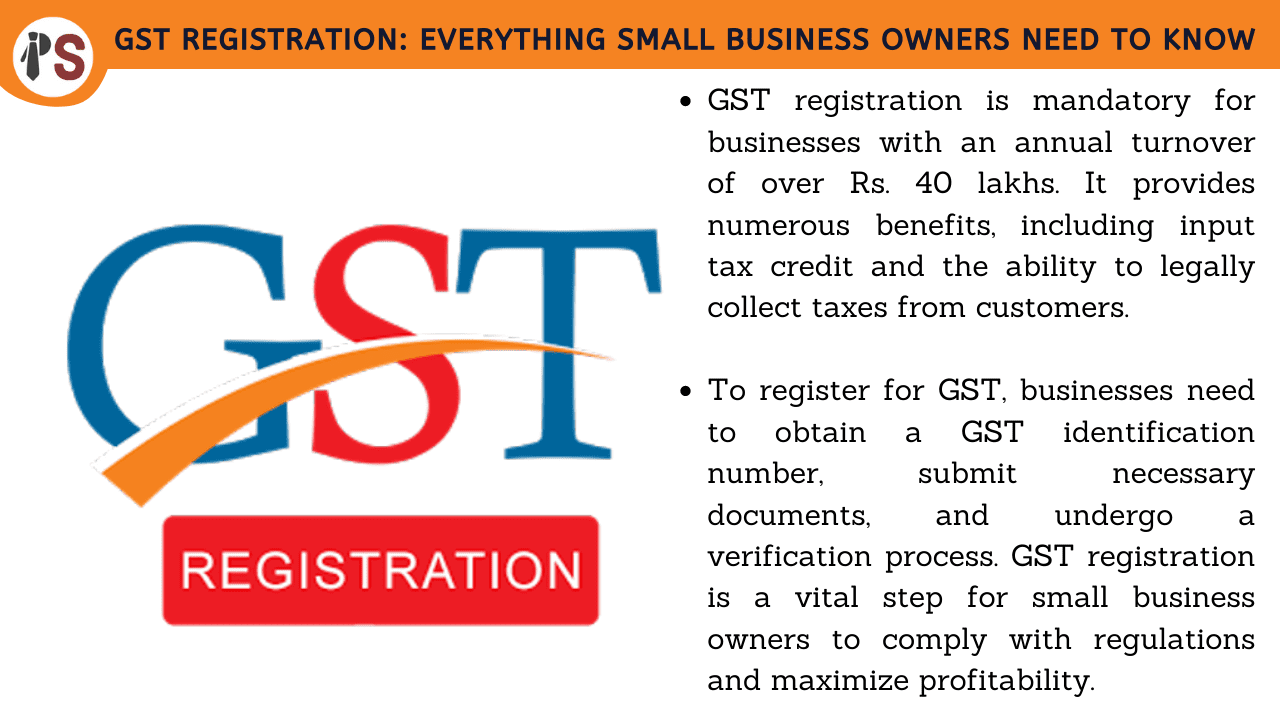
GST (Goods and Services Tax) registration is mandatory for businesses in India with a turnover of over Rs. 20 lakhs. It is important for small business owners to understand the GST registration process and comply with the regulations to avoid penalties and legal consequences. In this blog, we will provide a complete guide to GST registration for small business owners.
GST is a tax system introduced by the Government of India that replaced various indirect taxes such as VAT, service tax, and excise duty. GST is a destination-based tax system that is levied on the value of goods and services. GST has three components - CGST (Central Goods and Services Tax), SGST (State Goods and Services Tax), and IGST (Integrated Goods and Services Tax).
Every business with an annual turnover of more than Rs. 20 lakhs is required to register for GST. In special category states, the threshold limit for GST registration is Rs. 10 lakhs.
Legitimate Business Operations: GST registration makes your business legitimate and legal. It provides a unique GSTIN (Goods and Services Tax Identification Number) which is required for filing GST returns and claiming input tax credit.
Increased Credibility: GST registration enhances the credibility of your business and creates a positive image among customers, suppliers, and lenders.
Inter-State Business: GST registration is mandatory for businesses involved in inter-state trade as IGST is levied on such transactions.
Input Tax Credit: GST registration enables businesses to claim input tax credit on goods and services used in their business, thereby reducing the overall tax burden.
The GST registration process is online and can be completed in a few simple steps:
Step 1: Visit the GST portal (www.gst.gov.in) and click on the ‘Register Now’ button under the ‘Taxpayers (Normal)’ tab.
Step 2: Fill in the required details such as PAN, email ID, and mobile number. An OTP will be sent to the mobile number and email ID for verification.
Step 3: Fill in the Part A of the GST REG-01 form and submit it. An application reference number (ARN) will be generated.
Step 4: Once the application is approved, fill in Part B of the GST REG-01 form and submit it along with the required documents.
PAN card of the business owner
Aadhaar card of the business owner
Proof of business registration such as Partnership Deed, Certificate of Incorporation, or LLP Agreement
Bank account statement
Address proof of the business such as electricity bill, rent agreement, or property tax receipt
GST registration is a mandatory requirement for businesses in India with an annual turnover of over Rs. 20 lakhs. It is important for small business owners to understand the GST registration process and comply with the regulations to avoid penalties and legal consequences. GST registration not only makes your business legitimate but also enhances its credibility and provides input tax credit benefits. Follow the above steps and get your business GST registered to ensure smooth and hassle-free operations.
At Professional Saathi, we offer a range of business consultancy services that help businesses improve their performance, achieve growth, and overcome challenges.
Copyright 2025 © Created By KTPG PROFESSIONAL SAATHI CORPORATE CONSULTANT PRIVATE LIMITED, All Rights Reserved.
Leave Your Comment